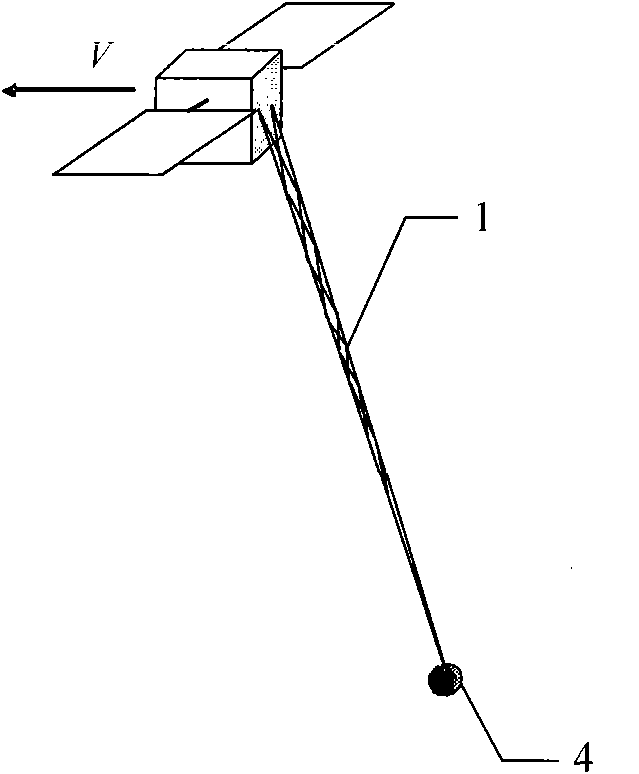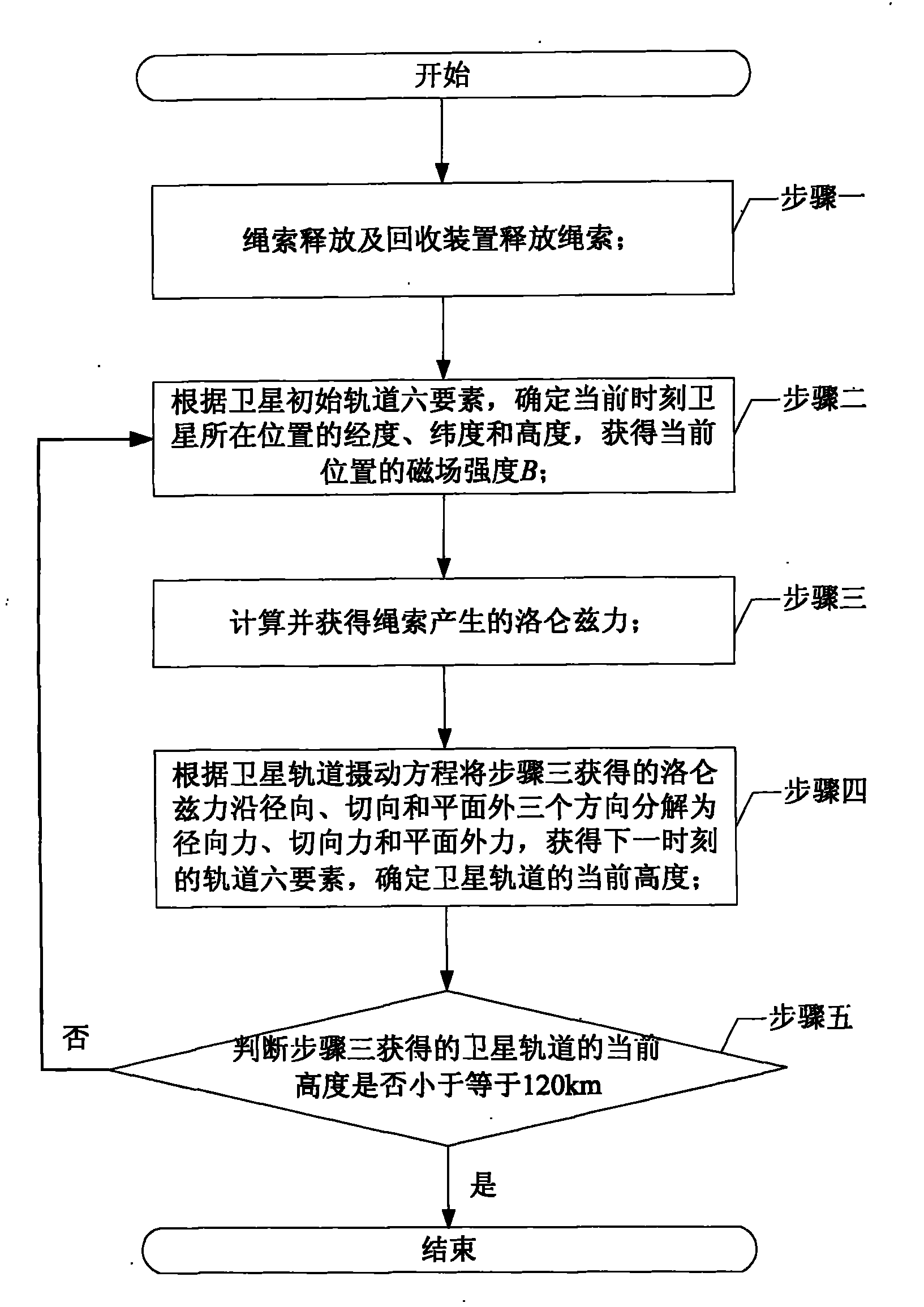Electro-dynamic tether based satellite deorbit device and method thereof
An electric power and satellite technology, applied in the field of satellite deorbit devices, can solve the problems of high deorbit cost and low deorbit efficiency, and achieve the effects of high deorbit efficiency, good effect and cost reduction.
- Summary
- Abstract
- Description
- Claims
- Application Information
AI Technical Summary
Problems solved by technology
Method used
Image
Examples
specific Embodiment approach 1
[0023] Specific implementation mode 1. Combination figure 1 with figure 2 Describe this specific embodiment, a kind of satellite deorbiting device based on electric power tether, it is made up of rope 1, rope release and recovery device 2, control module 3 and electron collection transmitter 4, and described rope 1 is made of insulating rope section It is composed of a conductive rope segment; the control signal output end of the control module 3 is connected to the control signal input end of the rope release and recovery device 2, and the end of the insulating rope segment of the rope 1 is fixed on the rope release and recovery device 2, and the rope 1 The end of the conductive rope section is connected with the electron collection emitter 4.
[0024] Working principle: The functions of the four parts of the hardware equipment of the electrodynamic tethered off-orbit system are as follows: Most of the rope 1 is a bare wire, which can collect electrons from the plasma in th...
specific Embodiment approach 2
[0030] Embodiment 2. The difference between this embodiment and the satellite de-orbiting system based on electrodynamic tethers described in Embodiment 1 is that the conductive rope section of the rope 1 is a mesh structure made of aluminum wires.
[0031] This specific embodiment adopts a mesh structure, which has a higher survivability than ropes with a single-strand or double-strand structure.
[0032] This embodiment can provide multiple paths to disperse mechanical loads and currents, and can provide high survivability for several weeks or months to the electric power tether flying in the space debris environment, so as to achieve the purpose of deorbiting.
specific Embodiment approach 3
[0033] Embodiment 3. The difference between this embodiment and the satellite de-orbiting system based on electrodynamic tethers described in Embodiment 1 or 2 is that the insulating rope section of the rope 1 has high compressive capacity and strong insulation performance composites.
[0034]This embodiment can ensure that the rope will not be broken after being released, and can also insulate the rope from the satellite.
PUM
 Login to View More
Login to View More Abstract
Description
Claims
Application Information
 Login to View More
Login to View More - R&D
- Intellectual Property
- Life Sciences
- Materials
- Tech Scout
- Unparalleled Data Quality
- Higher Quality Content
- 60% Fewer Hallucinations
Browse by: Latest US Patents, China's latest patents, Technical Efficacy Thesaurus, Application Domain, Technology Topic, Popular Technical Reports.
© 2025 PatSnap. All rights reserved.Legal|Privacy policy|Modern Slavery Act Transparency Statement|Sitemap|About US| Contact US: help@patsnap.com



